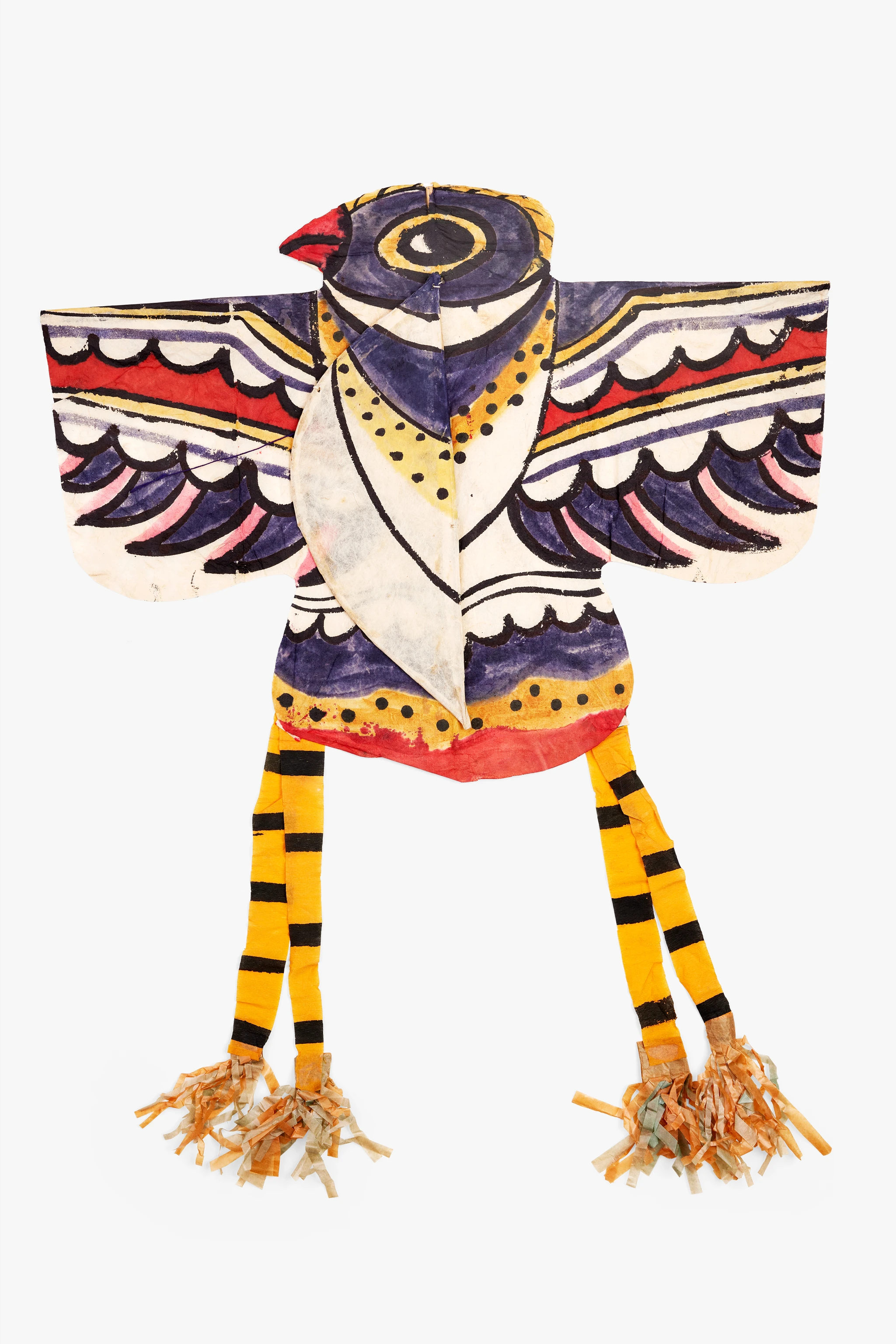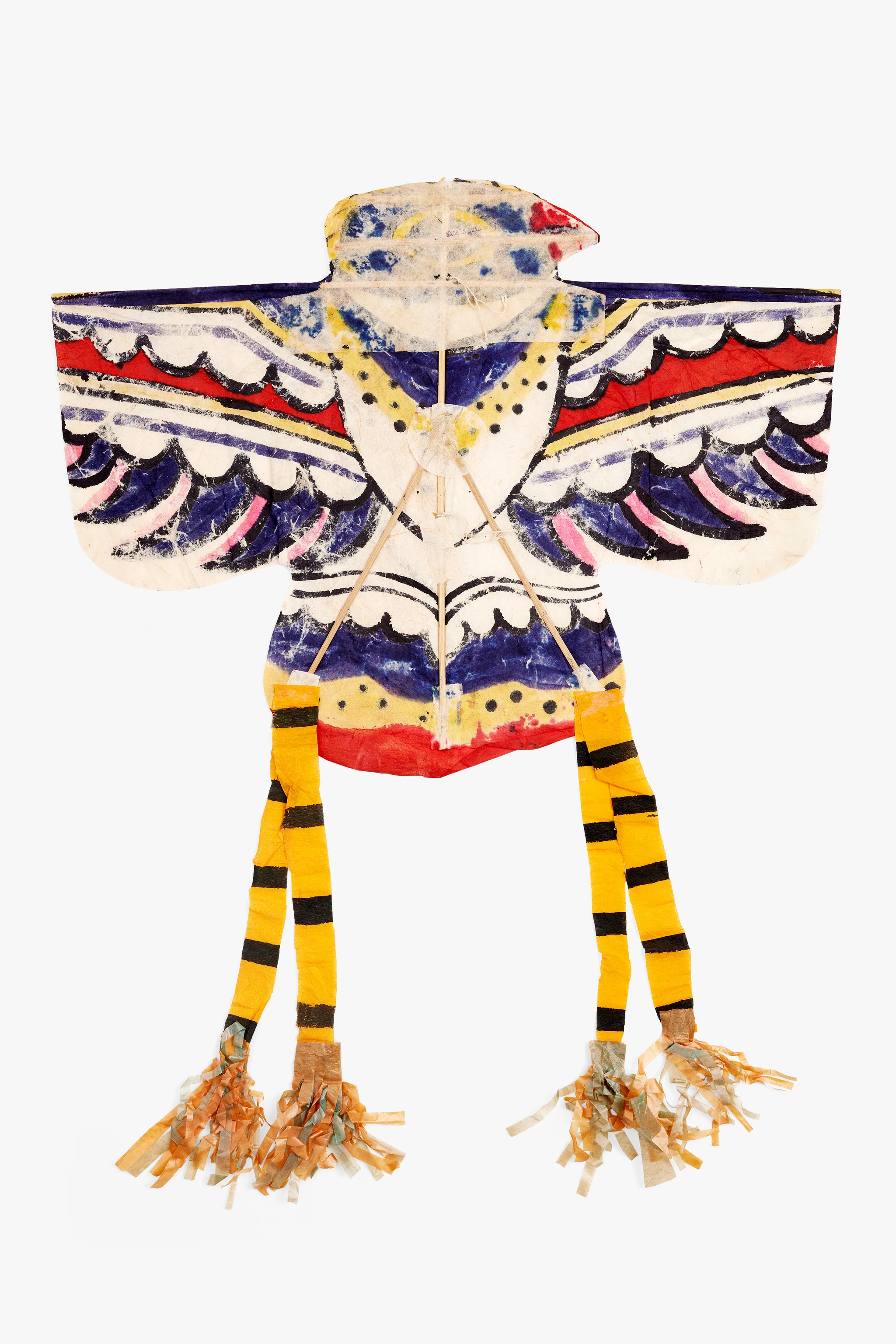
Bird Kite with Legs
Birds and winged insects are common motifs for kites, no doubt because of their ability to fly. Yet there is plenty of room for creative departure from real-life critters, and this paper kite resembles a bird with outstretched wings and legs—strange, given that an airborne bird with outstretched legs would be a peculiar sight. In the case of this kite, however, its outstretched legs would have helped, not hindered, its flight. These kinds of tails—and the tassels attached to them—help a kite to fly by adding weight to its bottom end. This increases drag, the resisting force that is generated when an object moves through air (or water). More drag stabilizes a kite by preventing it from spinning in the wind, something a child might deduce without understanding exactly why. A kite therefore offers a lesson in physics, but an informal one that Charles might have described as “found education.” One of the things that the Eameses valued most about toys was their ability to impart lessons in engaging ways, believing that toys could facilitate learning and lead to “serious ideas.”
- Artifact
- T.2019.2.320
- Materials
- Paper, ink, string, bamboo
- Dimensions
- 30 × 25 × ½ in
- 76.2 × 63.5 × 1.3 cm
